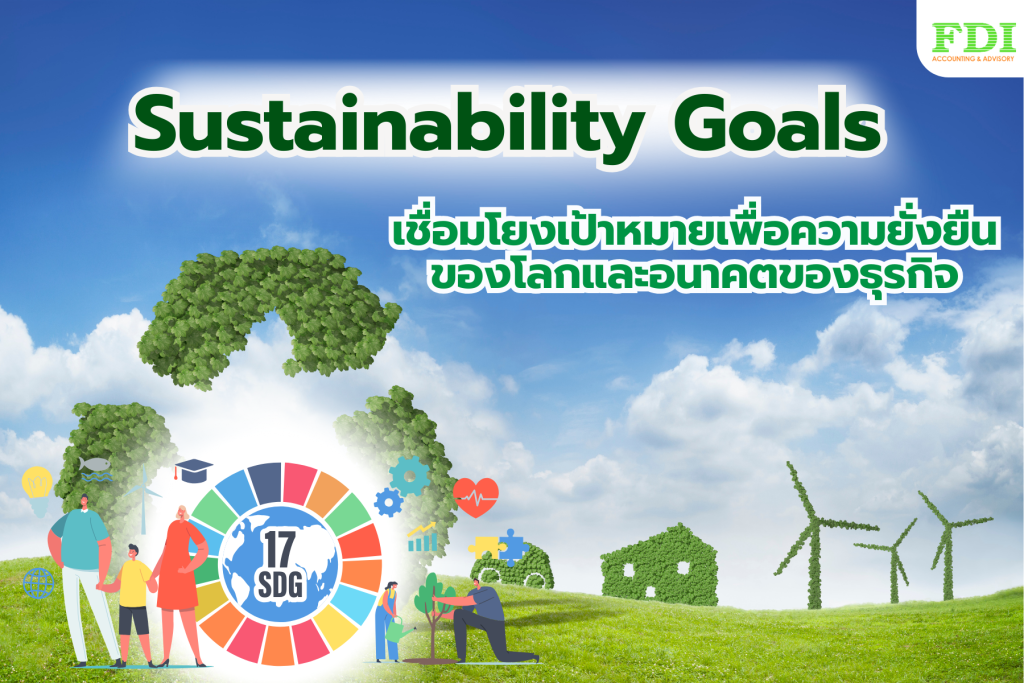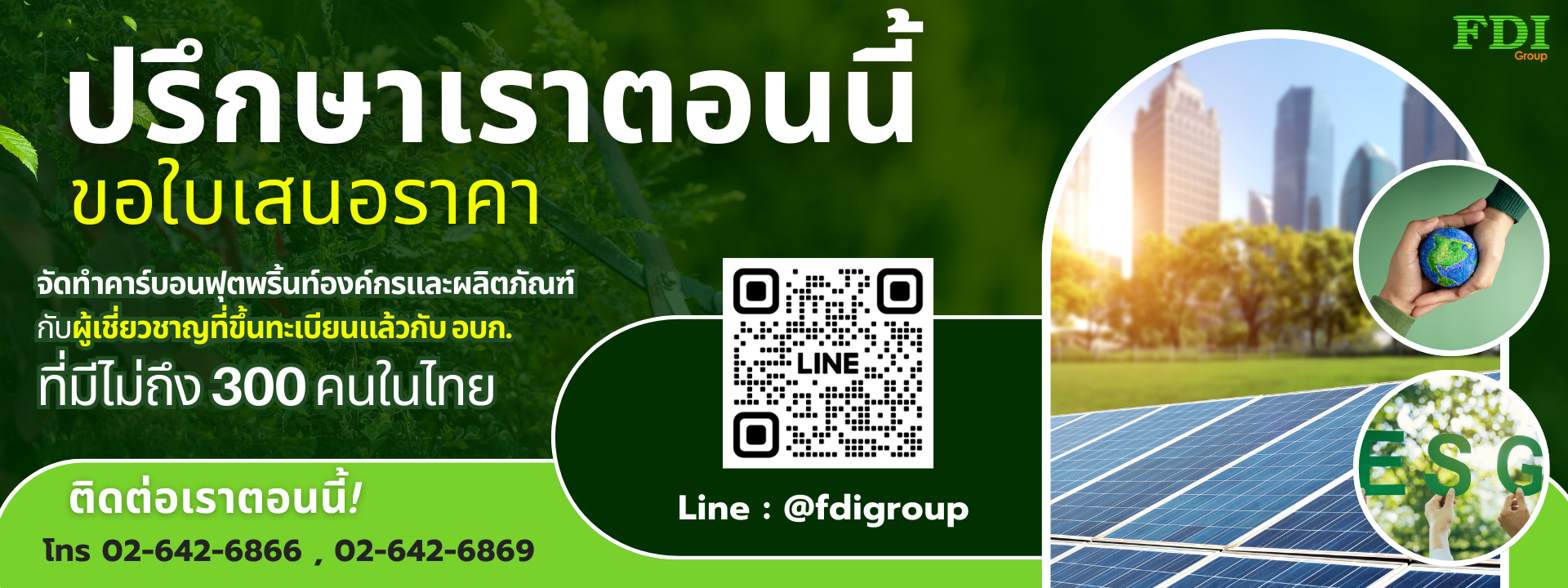As the world faces increasingly complex challenges such as poverty, inequality, global warming, diminishing natural resources, and pandemics that impact economies and people’s lives the environmental dimension, were established as a “guiding compass” to reduce these issues. The SDGs promote global cooperation to address problems systematically and sustainably. They serve as a practical framework for governments, the private sector, and all sectors of society to work together toward better solutions and a more sustainable future.
Sustainability Goals are one of the key environmental focuses that serve as a core foundation for sustainable development.
What are the Sustainable Development Goals (SDGs)?
SDGs are 17 global goals established by the United Nations (UN) in 2015 as a development framework for all dimensions economic, social, environmental, and governance. These goals were endorsed by 193 UN member countries and are set to be achieved by the year 2030. The official document signed and committed to by all member nations is calledTransforming Our World: the 2030 Agenda for Sustainable Development, also known as the 2030 Sustainable Development Agenda.
One of the key issues that organizations must urgently prioritize is environmental matters.
As the world faces increasingly severe environmental challenges each year such as global warming, rising greenhouse gas emissions, excessive consumption of natural resources, and pollution in oceans and the atmosphere “sustainability” is no longer a topic relevant only to environmental organizations. It has become a shared responsibility among the public sector, private sector, and the general public. Collaboration is crucial to move the world toward sustainable development, especially in the environmental dimension, which forms the foundation of all sustainability goals.
Environmental SDGs that organizations should be aware of include the following:
Although all 17 SDGs are interconnected, when it comes to environmental issues, there are specific goals that clearly emphasize environmental aspects, such as:
1.SDG 6: Clean Water and Sanitation Promotes efficient water use and reduces the discharge of waste into water sources.
2.SDG 7: Affordable and Clean Energy Supports the use of renewable energy, such as solar cells, wind, or biomass.
3. SDG 12: Responsible Consumption and Production Promotes a circular economy and maximizes the efficient use of resources.
4.SDG 13: Climate Action Reduces greenhouse gas emissions and plans for disaster response related to global warming.
5.SDG 14 & 15: Life Below Water and Life on Land Protects biodiversity and restores degraded ecosystems.
SDGs and ESG: Sustainability goals that can be developed together
Organizations need a framework that can guide systematic action. They can use the sustainability goals (SDGs) as a broad framework to set the direction for development and then apply ESG as a tool for internal implementation and measurable outcomes. When integrated, this approach can create positive change at both the micro level (business) and the macro level (global), yielding benefits across the board.
Advantages that answer the question, “Why should organizations use both SDGs and ESG?”
7 key reasons that help drive sustainable business
1. Plays a key role in enhancing a globally credible brand image, creating positive social impact, and contributing to global change.
Organizations that drive SDG goals and have clear ESG policies gain trust from customers and partners worldwide, especially in industries where consumers value ethics and environmental responsibility.
2. Promotes greater access to green finance opportunities.
Financial institutions and investors worldwide support companies that manage ESG and align with SDGs, particularly through Sustainable Funds, ESG Bonds, and environmental-focused funds.
3. Achieve higher ESG ratings in the capital market.
Listed companies that implement ESG principles and clearly communicate SDG goals often receive high ESG scores, enhancing their attractiveness to investors and qualifying them for sustainability indices.
4.Supports compliance with international environmental regulations.
for example, the EU CBAM (carbon tax), labor and human rights laws, environmental requirements from international buyers, and carbon taxes in other regions around the world, which are currently being drafted and will be implemented soon.
5. Promotes more stable and sustainable long-term growth across all organizations.
ESG helps manage risks, while SDGs guide development direction. Organizations that integrate both have a framework ready for sustainable growth, resilient to potential future changes.
6. Helps improve operational efficiency and reduce hidden costs.
In terms of the environment, managing energy, water, waste, and resources within the organization through ESG practices helps reduce costs tangibly and creates greater value for the organization.
7. Promotes alignment across global supply chain dimensions.
As is well known, purchasing companies (especially B2B) prioritize suppliers with clear and transparent SDG and ESG policies and reporting. This is particularly important in export industries such as automotive, electronics, textiles, and food.
As a sustainability business consultant, FDI Group recommends that organizations integrate recommends that organizations integrate sustainability goals (SDGs) with ESG to strengthen long-term business resilience. SDGs provide a framework for global sustainable development objectives, while ESG serves as a tool to manage internal risks across environmental, social, and governance aspects. Using both approaches together enhances access to funding, builds credibility, strengthens competitiveness, and meets the expectations of modern stakeholders. We advise organizations to start developing a systematic strategy today for better opportunities in the future.
Contact Us
- Facebook : FDI Group – Business Consulting
- @fdigroup
- Phone : 02-642-6866, 02-642-6869, 02-642-6895
- E-mail : infojob@fdi.co.th
- Website : www.fdi.co.th
BlogArticles
ธุรกิจกับผู้บริโภค จะสร้างการมีส่วนร่วมลดคาร์บอนฟุตพริ้นท์อย่างไร ?
ในยุคที่วิกฤตการเปลี่ยนแปลงสภาพภูมิอากาศ (Climate Change)...
Read MoreThailand Taxonomy คืออะไร ? มาตรฐานใหม่สู่สังคมคาร์บอนต่ำ
เคยสงสัยกันหรือไม่ ? ว่าการดำเนินงานด้านสิ่งแวดล้อมของแต่ละธุรกิจดำเนินการกันจริงจังหรือทำเพื่อกล่าวอ้าง...
Read MoreCarbon Label หรือ ฉลากคาร์บอนฟุตพริ้นท์ในไทยมีแบบไหนบ้าง ต่างกันอย่างไร ?
Carbon Label คืออะไร...
Read More




